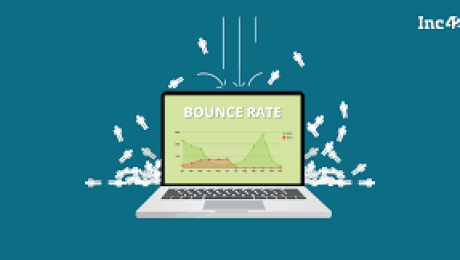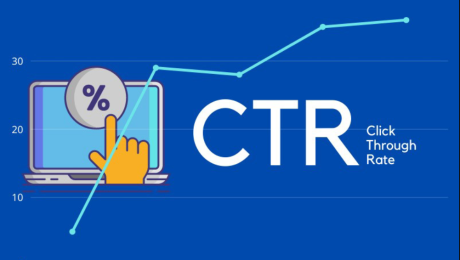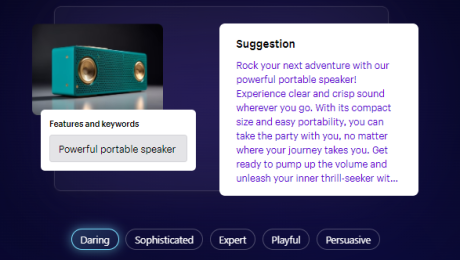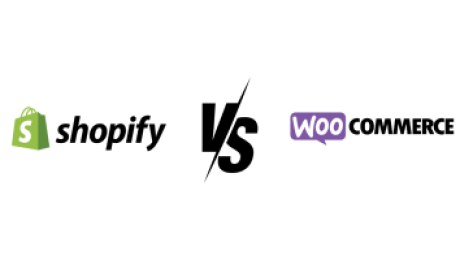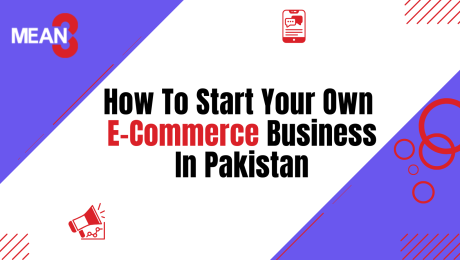Mastering Bounce Rate: A Strategic Guide for E-Commerce Success
Introduction
In the thriving world of digital marketing, the continuous growth of online businesses builds tough competition in the e-commerce market. If you are running an e-commerce business it’s complicated to understand users’ behavior, bounce rate is an excellent key indicator that allows you to estimate your business performance and evaluate how well users’ expectations are met. In the expanding digital world it’s difficult to regulate and manage bounce rate but implementing the strategic procedure will lead to accomplishing success in the digital universe.
Step By Step Method to Accomplish Lower Bounce Rate
Generally, bounce rate occurs when users quickly leave your website or may view only 1 page. Bounce rate is not a one-time task, it’s a continuous improvement process that indicates the deep knowledge of user’s preferences and supports overall successes in an integrated world. A lower bounce rate indicates your content is captivating and visitors stick longer to your content. Where a high bounce rate signifies complicated and discouraging content on your website. If your business is facing a high bounce rate here are some procedures help to reduce the bounce rate:
Optimizing Bounce Rate Data
The first step is to analyze bounce rate data to have a clear understanding of why your website causes this problem and what type of content has a good bounce rate in the digital universe. This will help you to implement the right content to target your audience. We use some critical tools to gather bounce rate data. These are Google Analytics, SEMrush, clicky, optimizely, Adobe Analytics, and others.
Elaborate Page Load Speed
With the availability of large choices no one likes to stay on slow pages, so if your website has a slow loading process people will not wait until it is completely loaded or move to other pages. To improve page speed browsers should store resources locally and spread your content across global servers.
Strengthen User Experience
A lot of users click on your website through technological devices like smartphones, laptops, and others. To boost a user experience, design simple and responsive methods.
Place Internal Links
Display your website links to other relevant published content, products, and resources helps to attract more traffic from those users who like to spend large time on your website because of content relevancy.
Regularly Test Your Webpage
Nowadays, technology is continuously going to be more advanced and influence people to change their preferences so regular checking of your webpage performance plays a vital part in your business success. Regular monitoring of different aberrations and analytics of your page helps to track how users interact with your content and identify areas for improvement.
Embracing with Mean3 to Achieve Good Bounce Rate
A good tool for evaluating web pages is essential for success in the digital world, bounce rate is an essential metric for measuring the overall effectiveness of business and improving webpage content to target the right audience. It helps to build user engagement and enhance user experience. If you don’t have knowledge of how to effectively evaluate bounce rates and are worried about how to engage your customers, Mean3 is here for consultation. We are experienced and have the best skills to efficiently implement different tools to evaluate your business performance and also ready to generate engaging content for your web pages. Kindly take advantage of this opportunity and do not hesitate to contact us!
- Published in Ecommerce, Technology
Boost your E-commerce Business By Click Through Rate (CTR)
Introduction:
As we know E-Commerce demand has been growing day by day in recent years because of their strategic marketing and availability of 24/7. Due to the wide range of business pages for similar products, it is challenging to stay on top but adopting new trends and technologies can help to grow your business. Click-through rate is commonly used in search engines to evaluate the percentage of effectiveness of advertising and digital marketing. This percentage analyzes online content and evaluates the number of clicks on a webpage. Click-through rate metrics are widely used for e-commerce platforms including Instagram, YouTube, Google, and others. A high percentage of click-through rates presents successful advertising whereas a low percentage presents the content is not engaging and needs more improvement.
Importance of CLick Through Rate for Businesses
Online businesses depend on their advertising. So, the click-through rate is an important metric to understand customers and helps to identify the relevancy of content and ads. Here are click-through rate important factors for businesses:
- Measuring Tool:
Click-through rate measures how well your content meets your audience preferences and a high score of click rate means more people find your content engaging.
- Improvement Work
Click-through rate influences ad quality in your content or ads to increase business visibility.
- Optimize Future Content
Analyzing click rate data helps to identify the type of content, ads, and keywords to be produced to gather the focus of the audience.
- Build Identity
More clicks on your webpage build brand identity and people consider your business seems trustworthy.
7 Tips to improve your Click Through Rate:
- Use high-quality images that are clear and relevant to your audience. Also, Ensure the image presents your brand identity.
- Use demographic segmentation to target the right audience.
- Use creative and focused keywords in the headings of your content which encourage your audience to click on your post.
- Evaluate the updated trends on social media to build new techniques to get a high click-through rate.
- Generate content that is eye-catching and according to trends as most people like to watch trending content.
- Engage with your audience by answering their quires.
- Regularly evaluate your social media performance by using different analytical tools.
Embracing Successful Marketing with Mean3
Click-through rate is not just a score it helps to boost your business presence and identifies how well your marketing performance is. Focusing on marketing strategies can lead to increased traffic and a higher click-through rate. If you don’t know how to create or implement marketing strategies you can contact Mean3 for consultation. We are here to build marketing strategies, creative and engaging advertisement content that is according to your target audience which helps your business to lead more traffic and creates a brand image.
As Shopify experts in the GCC, Pakistan, and the USA, we are here to guide you through the process and help you make the most of this innovative tool. Contact us today!
- Published in Ecommerce, Technology
Revolutionize Your E-Commerce with Shopify Magic’s AI Features
In the emerging world of e-commerce, staying ahead of the competition requires innovative tools and strategies. Shopify, a leading e-commerce platform, has once again raised the bar by introducing Shopify Magic, an AI-powered tool designed to revolutionize how you manage your online store.
AI-Generated Product Descriptions
Creating high-quality product descriptions can be a time-consuming and daunting task. With Shopify Magic, this process becomes effortless. By simply inputting a few keywords or product features, the AI generates compelling and engaging product descriptions that resonate with your target audience. These descriptions are not only informative but also optimized for SEO, ensuring your products rank higher in search engine results. This means more visibility, more traffic, and ultimately, more sales for your store.

Transforming Product Image Backgrounds
In e-commerce, first impressions matter, and high-quality images play a crucial role in attracting potential customers. Shopify Magic offers an incredible feature that allows you to transform your product image backgrounds, making them look professional and consistent across your store. This tool helps you create a visually appealing and cohesive online presence, which is essential for building brand trust and credibility.

Streamlining Your Workflow
By automating the creation of product descriptions and image transformations, Shopify Magic significantly streamlines your workflow. This frees up valuable time and resources, allowing you to focus on other critical aspects of your business, such as marketing, customer service, and inventory management. With Shopify Magic, you can efficiently manage your online store without compromising on quality.
Embracing the Future of E-Commerce with Mean3
Shopify Magic is more than just an AI tool; it’s a game-changer for e-commerce businesses. With Shopify introducing this powerful new feature and if you’re still unsure where to start, we have got you covered contact Mean3 now for a consultation. As Shopify experts in the GCC, Pakistan, and the USA, we are here to guide you through the process and help you make the most of this innovative tool. Contact us today!
- Published in Ecommerce, Technology
Shopify Launches Influencer Platform ‘Collabs’ For Merchants
Shopify released a network for Influencers who can connect with merchants globally. Merchants can install the app called ‘Shopify Collab’ which allows them to connect with influencers.
The Collabs Network allows merchants to share their products and brand profiles with all verified Collabs creators. To opt in, merchants set an instant commission offer on either all products or at the collection level, which will be shared with all Collabs creators who complete Collabs Network onboarding. Merchants can also opt into receiving program applications from Collabs Network creators.
It allows creators to generate instant commission and search for products which drives sales to merchant instantly without any approvals.
Criteria of Collab network:
Have completed Collabs onboarding
Have a public social media account with at least 1K followers
Are located in the US, CA or UK.
For full consultancy hire top Shopify agency ‘Mean3’ by clicking on following link : http://experts.shopify.com/mean3
Start Shopify store starting just $1/month by clicking on: https://shopify.pxf.io/QOLDyo
- Published in Ecommerce, Technology
Comparing Shopify and WooCommerce: Make the Right Choice for Your Ecommerce Journey
Ready to Set Up Your E-commerce Store? Choose Wisely!
E-commerce has boomed recently, opening doors for businesses worldwide. For e-commerce setup, Shopify and WooCommerce stand out. They each have distinct advantages, making the platform choice crucial for anyone entering online retail. In this blog, we’ll dive into the comparison of Shopify and WooCommerce, and explore how Shopify’s new personalized merchant experience plays a role in this dynamic landscape.
Shopify: The E-commerce Powerhouse
Shopify has established itself as a powerhouse in the e-commerce realm. Known for its user-friendly interface and extensive range of built-in tools, it’s a go-to choice for both newcomers and experienced retailers. One of Shopify’s standout features is its simplicity – you don’t need to be a tech expert to set up and manage your store effectively.
Shopify has recently taken a step forward by offering a personalized merchant experience through Re-platformer landing pages. This initiative is targeted at those who are considering migrating their existing stores to Shopify. The tailored in-admin migration support ensures a smooth transition, minimizing disruptions to your business operations. Furthermore, merchants can access additional tools such as migration-focused setup guides and sales guidance. This comprehensive support can significantly ease the often daunting process of migrating your store.
Pros of selling on shopify:
- User-friendly interface, perfect for beginners.
- Hosted solution, eliminating the need for separate hosting.
- Variety of professional templates and themes.
- Robust app store for adding functionalities.
- 24/7 customer support.
Cons of Shopify store:
- Monthly subscription costs.
- Limited customization compared to open-source solutions.
- Transaction charges for using payment channels from third parties.
- Advanced features might require coding or app integration.

WooCommerce: The WordPress Integration
WooCommerce, on the other hand, is an open-source ecommerce plug-in designed to integrate seamlessly with WordPress websites. This makes it an ideal choice for those who are already familiar with WordPress or want more control over the customization of their online store.
One of Woo Commerce’s biggest advantages is its flexibility. You have complete access over the store’s design, functionality, and hosting. With access to thousands of WordPress themes and plug-in, you can tailor your store to your exact specifications.
Pros:
- Open-source and free to use (though you might incur other costs like hosting and domain).
- Complete customization control.
- Extensive range of plug-in and extensions.
- Integrated blogging capabilities through WordPress.
- No transaction fees for using third-party payment gateways.
Cons:
- Requires separate hosting and domain setup.
- More technical expertise might be needed for setup and maintenance.
- You’re responsible for security and updates.
- Some plug-in can be costly.
Making the Choice
Choosing between Shopify and WooCommerce depends on your specific needs and priorities. If you’re seeking a hassle-free solution with a focus on user-friendliness and seamless migration, Shopify’s personalized merchant experience is a strong selling point. On the other hand, if you prioritize customization, flexibility, and are comfortable with more technical aspects, WooCommerce might be the better fit.
Both Shopify and WooCommerce offer exceptional tools to help you establish and grow your online store. With Shopify’s recent efforts to provide targeted migration support and tools, it’s becoming an even more attractive option for those looking to make the switch.
10 features Shopify has better than WooCommerce: Why merchants prefer Shopify
In the dynamic world of e-commerce, selecting the right platform to power your online store is a decision that can greatly influence your success. Shopify and WooCommerce are two prominent contenders, each offering a range of features tailored to various needs. Let’s delve into 10 things Shopify can do better than WooCommerce, shedding light on why merchants often lean towards Shopify for their e-commerce ventures.
- Simplicity and User-Friendly Interface: Shopify is renowned for its intuitive interface that requires minimal technical knowledge to set up and manage a store. Its streamlined design and straightforward setup process make it an ideal choice for entrepreneurs who want to dive into the world of e-commerce without a steep learning curve.
- Hosted Solution: Unlike WooCommerce, which requires separate hosting and domain setup, Shopify provides a fully hosted solution. This means Shopify takes care of the technical aspects, including server maintenance and security updates, allowing merchants to focus more on their business.
- Extensive Range of Professional Templates: Shopify offers a wide selection of professionally designed templates that cater to various industries and styles. These templates provide a solid foundation for your store’s design, allowing you to create a visually appealing and engaging online shopping experience.
- Integrated Payment Gateways: Shopify comes with built-in support for various payment gateways, simplifying the payment process for customers. Merchants don’t need to worry about third-party integrations to accept payments, making it convenient for both sides of the transaction.
- Robust App Store: Shopify’s app store boasts an extensive range of apps and integrations that can enhance your store’s functionality. From marketing tools to inventory management and beyond, these apps allow you to customize your store’s features without extensive coding.
- 24/7 Customer Support: Shopify provides 24/7 customer support via various channels, ensuring that merchants receive timely assistance whenever they encounter issues or have questions.
- Mobile Responsiveness: Shopify’s templates are designed to be mobile-responsive out of the box. This is crucial in the age of mobile shopping, ensuring that your store provides a seamless experience across devices.
- Security and Updates: Shopify takes care of security and updates, relieving merchants of the burden of managing these aspects. This saves valuable time and resources.
- Scalability: Shopify is well-equipped to handle the growth of your business. As your store expands, Shopify’s infrastructure can accommodate increased traffic and orders without compromising performance.
- Personalized Merchant Experience: Shopify’s recent initiative to provide a personalized merchant experience through Re-platformer landing pages offers tailored migration support and additional tools for a smoother transition. This can be a significant advantage for merchants looking to migrate their stores.

Why Merchants Prefer Shopify to WooCommerce
Merchants often prefer Shopify due to its user-friendliness, hassle-free setup, and strong support. Entrepreneurs prioritize products and customers over technical complexities, and Shopify’s professional templates and robust assistance cater to these needs. Personalized migration support adds to its appeal. In short, Shopify’s simplicity, comprehensive support, and feature-rich environment make it the go-to choice for reliable e-commerce.
Ready to Take the Next Step? Choose Your Ecommerce Powerhouse!
As you navigate the exciting world of e-commerce, the decision between Shopify and WooCommerce is pivotal to your online store’s success. Both platforms respond to various needs and preferences while offering distinctive features and advantages. Whether you’re drawn to Shopify’s user-friendly interface and comprehensive support or WooCommerce’s customization and control, the choice ultimately hinges on what aligns best with your business vision.
If you’re intrigued by Shopify’s simplicity, powerful features, and personalized migration support, why not take advantage of their tailored merchant experience? Sign up for Shopify today with Mean3
Are you considering a Shopify store and in need of professional guidance? Look no further. Contact Mean3, your official Shopify experts.
Don’t believe us? Learn about us through ‘For shopify store you will need an official shopify expert like Mean3.
- Published in Ecommerce, Shopify, Technology
Shopify’s 2023 Plan Pricing
When Shopify was established in 2006, it brought an exciting concept to the market: providing merchants of all sizes with the top e-commerce tools available to make commerce simpler and more accessible for everyone.
Though much has been altered in past years, some important aspects remain the same. The cost to access superior e-commerce tools has remained roughly constant. With regards to better supporting the mission and merchants, Shopify has been an announcement to update of the pricing plans – Basic, Shopify, and Advanced.
Current Shopify users can rest easy for the next three months, as their prices will remain unchanged. However, newcomers to the platform are being welcomed with lower introductory rates of just $1 per month during their trial period! No matter your experience level or budget, you’ll be hard-pressed to find another eCommerce solution that gives you more value than Shopify.
Evolution and Innovation With Time:
Shopify is dedicated to making tomorrow more possible than we can imagine today. The objective is to allow entrepreneurs and businesses of all varieties to construct, create and excel in any environment around the globe. They build tools driven by a passion for creating a better future!
Shopify has always been dedicated to providing merchants with the most cutting-edge, reliable, and efficient tools on the market at an unbeatable price. The commitment requires Shopify to frequently update and upgrade the products so they can stay ahead of competitors – but no matter how much technology changes over time, the core mission remains unchanged.
Updated Pricing:
Basic: The basic plan was $29 per month. Now updated to $25 per month.
Shopify: Shopify plan was for $79. Now updated to $65 per month.
Advanced: Advanced plan was for $299. Now updated to $399 per month.

Wrapping up:
By making this change, Shopify can persist in tackling some of the most challenging issues in the business with those best suited to take them on. This modification also allows Mean3 to push boundaries and empower more individuals to pursue their entrepreneurial dreams at speed essential for everyone’s benefit. Together, let’s make commerce better!
Looking for Shopify Solutions?
- Published in Ecommerce, Technology
How to Start your Own E-Commerce Business in Pakistan in 2022
Pakistan has seen a boom in e-commerce in recent years. The country’s population is increasingly turning to online shopping for their needs, whether for clothes, electronics, or other items.
There are many reasons behind this trend:
- Pakistanis are becoming more comfortable using the internet and making online purchases.
- There is a greater choice of online products and brands than in traditional brick-and-mortar stores.
- E-commerce offers the convenience of being able to shop from anywhere at any time.
This trend looks set to continue in the years to come as more and more businesses move online and Pakistani shoppers become even more comfortable with e-commerce. If you are also considering starting an e-commerce business in Pakistan, this guide will give you all the information you need to get started.
How to Start a Successful Ecommerce Business in Pakistan in 2022:
According to recent estimates, the country’s e-commerce market is currently worth around $1 billion and is expected to grow to $5.4 billion by 2025. This presents a huge opportunity for entrepreneurs looking to start their online businesses.
If you’re thinking about starting an eCommerce business in Pakistan, there are a few things you need to keep in mind. In this article, we’ll share tips on starting a successful eCommerce business in Pakistan.
1. Select the right platform
There are a number of different platforms you can use to launch your eCommerce store. The most popular option is to use an existing platform like Shopify or WooCommerce. These platforms provide everything you need to start, including hosting, payment processing, and security.
Another option is to develop your eCommerce platform. This can be a more complex and expensive option, but it may be the right choice if you have specific requirements that an off-the-shelf solution can’t meet.
2. Find the right niche
One of the keys to eCommerce success is finding a niche market that you can serve well. When selecting a niche, it’s important to consider a few factors, such as:
The market size: You must ensure enough demand for your products or services.
The competition: It’s important to find a niche that isn’t too crowded. Otherwise, it will be difficult to stand out from the competition.
Your expertise: It’s also important to choose a niche you know about. This will make it easier to create content and marketing materials that resonate with your target audience.
3. Create a strong branding strategy
Brand identity should be the top priority. It’s important to develop a strong branding strategy before you launch your eCommerce store. This should include things like your brand name, logo, and tagline.
Your branding should be consistent across your marketing materials, including your website, social media accounts, and email newsletters. This will help you build recognition and trust with your target audience.
4. Invest in marketing
Once you’ve launched your eCommerce store, you need to start driving traffic to it. You can use several different marketing channels, including Search Engine Optimization (SEO), pay-per-click (PPC) advertising, and social media marketing.
Experimenting with different marketing strategies to see what works best for your business is important. You may also consider hiring a digital marketing agency to help you get the most out of your marketing efforts.
5. Focus on the customer experience
There are many things you can do to improve the customer experience, including:
Offering fast and free shipping: Customers expect to receive their orders quickly and without paying for shipping.
Making it easy to return items: Customers should be able to return items if they’re not happy with them easily.
Providing excellent customer service: If customers have problems with their orders, they should be able to get in touch with someone who can help them quickly.
Focusing on the customer experience will make you more likely to retain customers and grow your business.
Conclusion:
These are just a few tips for starting a successful e-commerce business in Pakistan. But, it is not as easy as it seems. So, we suggest taking some professional help. Don’t worry; we have got you covered— Mean3 is a leading digital marketing agency in Pakistan. We have a team of experienced professionals who can help you with all aspects of your eCommerce business, from developing your website to marketing your products.
Moreover, we can also guide you on how to start an eCommerce business in Pakistan step by step. Get in touch with us today to know more about e-commerce business in Pakistan.
Want to get your E-commerce Store Developed by Experts?
- Published in Ecommerce



